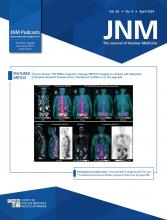Abstract
Arginase hydrolyzes ʟ-arginine and influences levels of polyamines and nitric oxide (NO•). Arginase overexpression is associated with inflammations and tumorigenesis. Thus, radiolabeled arginase inhibitors may be suitable positron emission tomography (PET) tracers for staging arginase-related pathophysiologies. We report, for the first time, the synthesis and evaluation of radiolabeled arginase inhibitors, 18F-FMARS and 18F-FBMARS, developed from α-substituted-2-amino-6-boronohexanoic acid derivatives. Methods: Arylboronic ester-derived precursors were radiolabeled via copper-mediated fluorodeboronation. Binding assays using arginase-expressing PC3 and LNCaP cells were performed. Autoradiography of lung sections from a guinea pig model of asthma overexpressing arginase, and dynamic micro-PET imaging with PC3-xenografted mice evaluated the radiotracers’ specific binding and pharmacokinetics. Results: 18F-Fluorinated compounds were obtained with radiochemical yields up to 5% (decay-corrected) and average molar activity of 53 GBq.µmol 1. Cell and lung section experiments indicated specific binding which was blocked up to 75% after pretreatment with arginase inhibitors. Micro-PET studies indicated fast clearance of the radiotracers (7.3±0.6 min), arginase-mediated uptake, and a selective tumor accumulation (standardized uptake value: 3.0±0.7). Conclusion: The new 18F-fluorinated arginase inhibitors have the potential to map increased arginase expression related to inflammatory and tumorigenic processes. 18F-FBMARS showed the highest arginase-mediated uptake in PET imaging and a significant difference between the uptake in control and arginase-inhibited PC3 xenografted mice. These results encourage further research to examine the suitability of 18F-FBMARS to select patients for treatments with arginase inhibitors.
- Animal Imaging
- Radiochemistry
- Radiopharmaceuticals
- arginase
- arginase inhibitors
- fluorine-18
- positron emission tomography (PET)
- Copyright © 2021 by the Society of Nuclear Medicine and Molecular Imaging, Inc.







